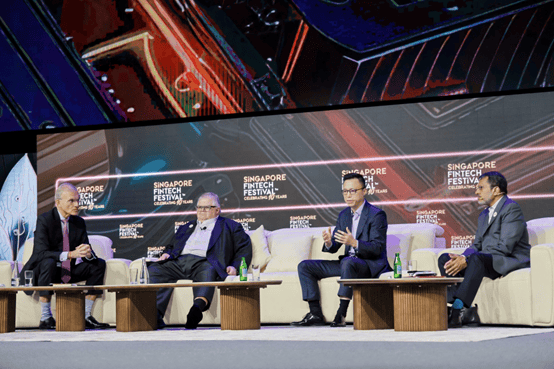
Understanding the new SAP cloud mindset
SAP partners have been delivering cloud services for years, so why is SAP now talking about the importance of developing a cloud mindset, insisting on the use of its Activate Methodology and Fit to Standard workshops to achieve the right implementation model?
Until now, the shift to the cloud has had little impact on the way consultants scoped a deployment or day to day customer support. But the introduction of RISE with SAP S/4HANA Cloud, public edition or private edition, is a very different way of working to HANA Enterprise Cloud (HEC). With SAP now in control of software infrastructure delivery, the role of the partner has changed fundamentally. From scoping to implementation, support to maintenance, as Robert MacDonald, Innovation & Technology Manager at Absoft explains, partners will struggle to successfully deliver RISE with SAP to customers unless they invest in their staff to create a new cloud skillset and mindset.
What’s Changed?
SAP partners have made the transition to cloud-based service delivery over the past decade, transitioning customers from running familiar ERP solutions on premise to a cloud-based platform such as Azure. And, while this seemed a big deal in terms of changing licences and adapting to different cost/ flexibility models for customers, the business impact for partners was pretty minimal. The product implementation was still scoped the same way; partners were still in control of key aspects of the process from implementation timelines to updates and staff did not require any new skills.
With the arrival of RISE with SAP, the model has changed completely. Irrespective of whether a customer opts for RISE with SAP S/4HANA Cloud, public edition or RISE with SAP S/4HANA Cloud, private edition, the entire approach is different – and partners need to adapt fast.
In theory the process is far simpler. SAP has created a standard infrastructure and offers customers small/medium/ large architecture options to streamline pricing. An ‘adopt not adapt’ mindset means customers are encouraged to avoid any customisation – indeed customisation or extensibility, if required, can only occur outside the core S/4HANA product, using Application Programming Interfaces (APIs) to link to complementary cloud solutions. So where do partners fit into this new model?
New Skills
One of the biggest changes is affecting consultants whose traditional expertise in scoping the implementation and outlining business specific customisations is no longer required. There is no longer any need for a Gap Analysis to identify areas where the SAP ERP solution did not support a customer’s specific business needs. No need for a custom development specification. Instead, consultants now undertake Fit to Standard workshops with customers.
The onus is on explaining the benefits of a standard, best practice approach to customers and reinforcing the fact that customisation should only be used for competitive differentiation in a standard, cloud-based deployment. As such, consultants need new skills: to assess a customer’s processes, identify those areas of differentiation that would justify the development of extensible solutions and work with department heads to achieve the change management required to match the SAP standard process.
Partners must take their ecosystem of consultants with an extensive skill set based on identifying problems, writing development specifications and managing project delivery and help them make the transition to this new approach. They need to invest in developing change management skills and provide the resources required to manage this new cloud mindset with customers.
New Delivery and Support Processes
The new skills set requirements extend far beyond initial consultation. RISE with SAP is delivered using SAP’s Activate Methodology, which has been updated to support the implementation of this standard cloud project. This again, requires an entire new skill set for Project Managers. From provisioning systems to testing, connectivity to networks and configuring interfaces, every request has to go via SAP. For Project Managers used to being in control and working with their own internal teams on these processes, it will take time to become familiar with SAP timelines, processes and people.
For example SAP, may require a week’s notice prior to turning on connectivity, something that could have been achieved within hours in house. If the Project Manager is not up to speed with these processes, the entire project could become rapidly derailed. Essentially, this shift to a cloud model is an odd mixture of a simplified, standardised way of doing things and a reversion to old fashioned service requests over which partners have no control. It is also important to understand where SAP’s remit starts and finishes: there are some areas of the deployment that will incur an extra cost and others that SAP will not handle.
The new skill set is not limited to implementation – the same issues arise during ongoing support. From system patches to updates, it is vital to ensure changes fit in with business timelines – avoiding month ends, for example. While partners are no longer in control of these system changes they have a key role to play in coordinating these processes for customers when informed by SAP that an update is set to occur. The provision of a service that can coordinate downtime, inform any affected business areas, manage change control and oversee testing is key to avoiding those spikes in cloud costs that have affected businesses in the past.
Conclusion
SAP recognises the very significant changes in skill set and process required to support this new generation of cloud solutions and is investing in supporting its partners. But partners will need to meet them more than halfway if RISE with SAP is to be deployed successfully. Partners can no longer buy the on-premise product they have known for 20 years and set it up unilaterally. Every partner must now collaborate closely with SAP, use the company’s methodology, embrace the lessons learned and work with the customer success teams.
This is fundamentally changing every aspect of the SAP partner role – something that has taken a significant number of organisations – especially those who did not expect RISE with SAP to take off – by surprise. How many partners have recognised and documented the new support and maintenance model to ensure customers understand the changing roles of supplier and partner in this new cloud mindset? How many have been through their first SAP Activate project and now understand SAP’s processes and timelines? Critically, how many have truly invested in creating that new cloud mindset and skills to support staff in making the evolution to this new model?
The success of each customer’s implementation will depend on the speed with which partners embrace the new cloud mindset.


